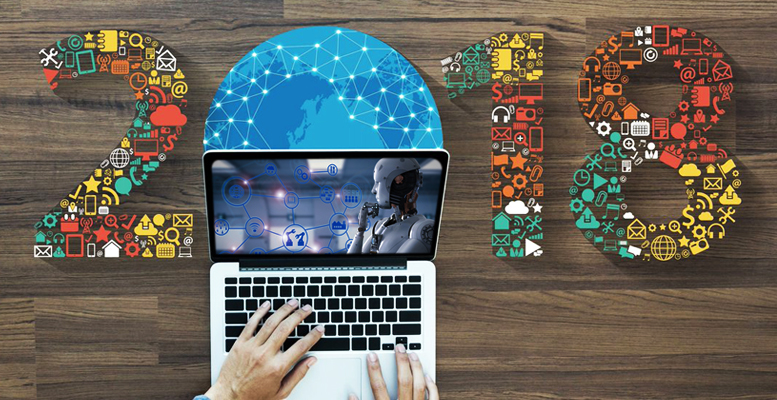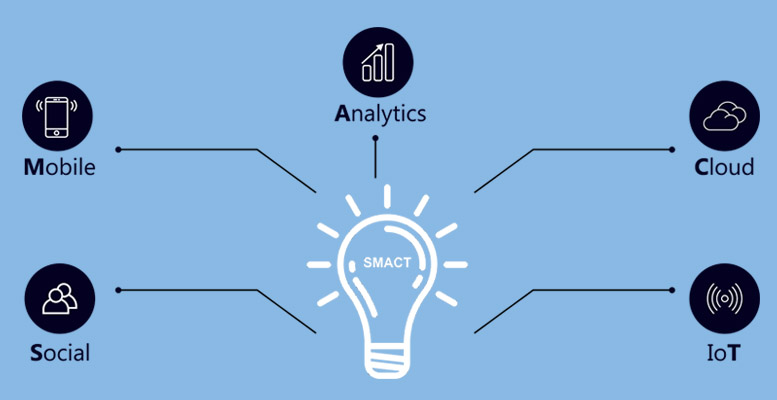Top 10 Digital Transformation Trends to Watch Out in 2018

Technology is changing the world for better. Watch out the 10 hottest digital transformation trends for 2018.
Technology is shaping up the way we live our lives and the way businesses operate. Over the decades, we’ve seen some breakthrough technologies making remarkable contributions in the tech world. 2017 was another year of significant technology advancements.
We saw some promising technology innovations that started out small, but are driving a digital revolution now. In this article, let’s look at the top 10 digital transformation trends that are all set to disrupt the business landscape in 2018.
1. Artificial Intelligence (AI)
Artificial Intelligence is not a newbie in the digital world. We’ve all used some sort of AI based product or service at some point in time. But today, Siri, Alexa, chatbots and virtual assistants are becoming more popular than ever before, and consumers are widely accepting AI-powered services. This has stirred a revolution in businesses worldwide to deploy AI and improve the end-user experiences.
2. Internet of Things (IoT)
The past few years have seen a gradual but increasing trend in what we call Internet of Things (IoT). IoT is the concept of integrating everyday physical objects with internet. The era of intelligent things is certainly here. Predictions reveal that in the next five years, $6 trillion will be spent on IoT solutions globally, and about 24 billion IoT devices will be installed by 2020.
3. Edge Computing
Edge computing is growing rapidly with an increase in AI and IoT. It is an innovative concept that enables smooth processing of massive data produced by IoT powered devices. This Edge-IoT partnership is proving to be revolutionary, and sooner or later, all businesses and all industries will adopt edge based computing solutions to deliver best-in-class services.
4. Cloud Adoption
Cloud based storage solutions are trending for a while now. As long as there’s big data, cloud is here to stay. Companies across the globe are adopting cloud platforms to store massive business data, improve efficiencies and attain maximum data security. Today, a movement to cloud is a strategic investment, and 73% companies are planning to move to a cloud based data center within the next two years.
5. Advanced Analytics
Big data has taken the world by storm, and most companies have already reached a stage of data saturation. With growing volumes of data, there’s a growing need for smart, advanced analytics. Analytics is what gives meaning to big data and enables informed decision making in digital enterprises. The coming years will see a massive rise in data analytics as a service and an increase in data engineering and data science careers.
6. Mobile Enablement
The world’s connected to mobile devices, and entrepreneurs are realizing the fact that an effective mobile enablement strategy can impact their businesses in a positive way. Mobility enables businesses to reach out to massive target markets and brings productivity in the way employees perform. Studies predict that IT enterprises will spend about 25% of their software budgets towards mobile application development.
7. 5G Technology
We’ve seen generations of mobile networks pass by and soon enough the breakthrough 5G technology will take over. 5G will certainly be faster than 4G and is expected to deliver greater productivity with multi-gigabits per second. Though it is still in the development phase, it is all set to bring a revolutionary ‘Gigabit Smartphone’ era.
8. Blockchain
The world’s talking about Bitcoin and cryptocurrency. While it can still be a foreign term to many, the cryptocurrency or virtual currency market is on an all-time high, and is expected to grow enormously in the near future. Blockchain is the technology designed for accounting and verification of digital currencies and is certainly going to be a growing trend in 2018.
9. Augmented Reality (AR)
Digital transformation has also impacted the gaming industry in an impressive way. “Pokemon Go” was a game that used a digital interface by placing virtual objects in the real world. And ever since, Augmented Reality has been a hot trend in the gaming world. Apart from gaming, AR is being actively used in 3D viewers, reality browsers and to deliver a wide range of experiences.
10. Remote Workspaces
Telecommuting or remote workspaces is not a new advancement. It’s been trending for a long time now, and in the coming years, there will be a widespread acceptance to remote work from both employer and employee perspectives. Advancements in technology are enabling entrepreneurs to hire talent beyond boundaries and cultures and remote workspaces are the future of digital enterprises.
Digital transformation is touching all spaces of human life and all industries and businesses in multiple ways. It has already deeply impacted manufacturing, retail, healthcare, finance and banking industries. And with time, all enterprises are realizing the growing need to digitize. How long until you adopt these trending digital transformation technologies and match up with the changing times?

